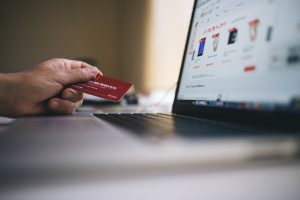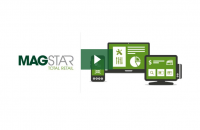How to Get Started with Omnichannel for Retail
Omni-channel (or is it omnichannel?) is not for start-up retailers. Shops that have both feet on the ground and a presence on the web are now faced with the challenge of executing a seamless and sophisticated shopping experience for their customers. The struggle is real.
Omni-channel is a multichannel sales approach that provides customers with an integrated shopping experience.
Where on earth to start? You’re here to learn what actual measures you can take or technology solutions you can invest in to start offering your customers the superior experience promised by proponents of an omni-channel strategy.
Let’s break things down. When beginning to draft an omni-channel strategy, we recommend these three solid priorities as your initial goals:
- Make it easy for customers to get their products however they want when ordering online.
- Give customers the same kind of flexibility when purchasing in store.
- Ensure that your system supports a live stream of product data to all of your sales platforms to avoid any confusion or frustration when customers switch from one channel to another.
These are real, meaningful features and services that contribute demonstrably to the quality of your customer experience.
1 – Offer Online Product Delivery Flexibility
 When a customer browses a retailer’s website, they may have a number of intentions. They may simply be doing research, they may be checking to see if their local store has the product in-stock, or they may be intending to make the purchase immediately. Whether they’re browsing for deals or beelining for the digital checkout line, the more mindful you are of their potential needs, the more likely you are to secure both the sale and their loyalty.
When a customer browses a retailer’s website, they may have a number of intentions. They may simply be doing research, they may be checking to see if their local store has the product in-stock, or they may be intending to make the purchase immediately. Whether they’re browsing for deals or beelining for the digital checkout line, the more mindful you are of their potential needs, the more likely you are to secure both the sale and their loyalty.
The ideal omni-channel customer experience gives customers more control over how they do things. The way to impress the customer is by taking into consideration that they might want to:
- Buy online and have the item shipped to their house or office
- Buy online and have separate items within a single order shipped to different locations
- Buy online and pick the item up at a store location of their choosing
- Request notification by either phone or email when an item is in stock at a particular location
- Reserve the item online and pay for it upon pickup at the store location of their choosing
- Reserve multiple items online and have store employees assemble the purchase for them ahead of time
Anything that goes for the web should also apply to other channels like ordering over the phone – it’s up to the retailer to anticipate and accommodate for the variety of ways a customer might like to make their purchase.
2 – Offer In-Store Product Delivery Flexibility
In most cases, when a person walks into a physical store, they locate the product they want, take it to the cash register, buy it, and leave with it in hand. Omni-channel considerations aren’t just for websites, if you take into consideration the exceptions to the above rule and plan ahead, you make life easier for customers with special requests. Earn their loyalty by proving that you go above and beyond just the normal store experience.
Consider a customer buying an extra large bag of dog food who doesn’t own a car; if your cashier can offer to ship that purchase to their home, you’ve demonstrated both thoughtfulness and flexibility that they may not get from other stores.
If a customer walks into your physical retail space, the point of sale should be able to accommodate a wide variety of transactional processes.
With an omni-channel point of sale system, your employees will be able to easily cater to the customers who want to:
- Pay for the item in-store and have it shipped to their house or office (commonly requested for large, heavy purchases that are inconvenient for the customer to transport themselves)
- Pay for the item in-store and have it shipped to multiple locations
- Pay for the item in-store and have it shipped to a location on a specific time and date for an event or special occasion
- Pay for an item that the store currently doesn’t have in stock, and receive a phone call or email notifying they can come pick it up when it’s shipped to the store
- Pay for an item not currently in stock and have it shipped directly to their home
- Pay for an item not currently in stock but available at another location, and then travel to that location and pick up their item there
In many of these cases, the flexibility of your omni-channel system turns a failed attempt to purchase a product into a successful sale. Naturally, ensuring your staff are trained to offer these options where appropriate is just as important as developing the capability itself.
Another element that makes this type of omni-channel service most effective is implementing an automated ordering and shipping process that can ship from both stores and from a warehouse, and understands which option is most appropriate depending on built-in logic.
There are many elements to take into consideration in order to maximize the effectiveness of this particular offering, but the benefit of a dramatic improvement to customer experience and retention is undeniable.
3 – Ensure Consistent Product Data across All Channels
 Analyst research into cross-channel retail and customer satisfaction has strongly indicated that one of the biggest pitfalls for retail stores is the danger of going omni-channel and presenting customers with inaccurate, incomplete, or inconsistent product data from one channel to the next.
Analyst research into cross-channel retail and customer satisfaction has strongly indicated that one of the biggest pitfalls for retail stores is the danger of going omni-channel and presenting customers with inaccurate, incomplete, or inconsistent product data from one channel to the next.
Imagine the annoyance of a shopper trying to pick out a new refrigerator for their home and discovering that your website doesn’t have any information of the dimensions of the product. Worse still, suppose that a customer uses your website to research a product, comes into your store, and then finds that the prices are completely different from what they saw online.
Preventing that kind of miscommunication is an omni-channel capability that is invisible to customers when it works, and extremely visible when it hasn’t been properly implemented.
“Omni-channel helps retailers stay current with customer’s expectations. Today’s consumers expect a seamless shopping experience between online and brick-and-mortar channels.” – Steven Greenwood, President, Magstar
A good end-to-end software solution that connects every part of your technology ecosystem together will ensure that if the price changes in your database, that information gets pushed to both your stores and your online shopping basket the moment it happens.
When a new product becomes available, all of the relevant data gets pulled into the online product page and updates in a live environment. Your system should be able to make sure there are no inconsistencies or missing data when it comes to the information important to your customers, like:
- Price
- Availability
- Locations with stock
- Product photo
- Ingredients
- Dimensions
- Instructions
- Any other industry-specific data that motivates customer purchase
A good solution will come with best practices built in around the data that needs to be available to customers. If you require very specific data sets (were these socks made in North America?), then look for a system that is easily customizable to ensure you can tailor the product page to what you know your customers look for, and not just what software providers imagine they might.
Start Small, but Don’t Drag Your Feet
There is infinitely more complexity to be had, when it comes to omni-channel. Part of why it can be so hard to define is that it is a constantly evolving discipline, improving and expanding as retailers experiment with new approaches and learn from both successes and mistakes.
Mid-sized retailers have a lot to gain from taking advantage of what’s already known to be effective, and so there’s very little reason to wait. Just ensure that you have a clear roadmap of what you’re implementing and what the goals you expect to accomplish with that implementation are.
We strongly recommend starting with these three goals, and hope that seeing some actual real-world examples of omni-channel functionality will give you the confidence to start thinking about the next steps for your business.
If you are in the process of researching different ERP & POS vendors with omni-channel capabilities, we encourage you to download our guide that we put together to help retailers like you find a solution for their specific needs.
*no email registration required
RECENT POSTS
 Video: Magstar Total Mobile POS VSR Product DemoMagstar's Mobile Point of Sale solution was showcased at [...]
Video: Magstar Total Mobile POS VSR Product DemoMagstar's Mobile Point of Sale solution was showcased at [...] How Unified Commerce will Impact Your Retail BusinessCustomers expect a seamless shopping experience across all channels [...]
How Unified Commerce will Impact Your Retail BusinessCustomers expect a seamless shopping experience across all channels [...] Video: Why Magstar Total Retail ERPFind out how Magstar Total Retail, our all-in-one ERP [...]
Video: Why Magstar Total Retail ERPFind out how Magstar Total Retail, our all-in-one ERP [...]
